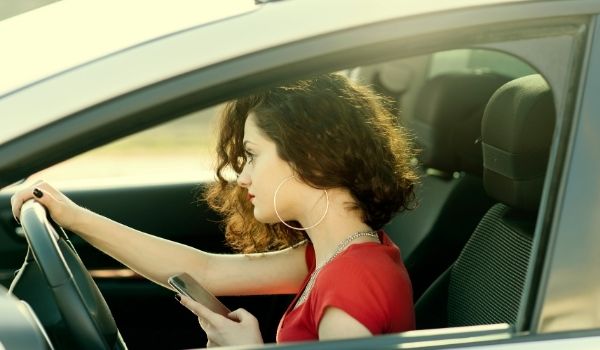
Texting and driving might be the biggest fear for the parents of new drivers. Well, distracted driving in general. Most drivers think they are good at multi-tasking and who knows, maybe they are, but risking their life or someone else’s just to reply with a GIF to a friend is not at all worth it.
There are 3 main types of distractions.
- Manual: Any actions that involve hands leaving the steering wheel.
- Visual: Actions that take your eyes off the road.
- Cognitive: Activities that take the focus off driving.
Not to scare you because I know you are already stressed enough, but approximately 8 people per day are killed in the United States because of a distracted driver. Whether it’s because of themselves or someone else. That may not seem like a lot but stressing the importance of this topic to your teen will save their life, a passenger or another driver.
What is an example of distracted driving you ask? Below are just a few.
- Texting or calling while driving
- Reaching for something
- Eating while driving
- Checking messages and/or emails
- Talking to a passenger
- Changing the radio station or volume
- Looking at directions on the phone
- Looking at something out the window
- Reading a billboard on the road
You may think these topics are common sense to your driver, but your new driver is already distracted with the excitement of being able to drive by themselves. Remember to set the example for them. You are their role model when it comes to driving and it is important to be consistent with the message you share with your teen and your own driving behaviors. Although you may think they are just playing on their phone in the passenger seat, they are paying attention.
Below are some talking points to help you talk with your teen regarding the importance distracted driving has on them.
- Texting/calling while driving is illegal, and a ticket could be obtained.
- If the call or text is urgent, have the passenger take the call or reply to the text. If alone, pull to the side of the road or an empty parking lot.
- Put the cell phone completely out of reach. Ex. Glove box, trunk, back seat, etc.
- Set the notification sound on the phone to silent or turn it completely off.
- Make sure all mirrors, temperature controls and the radio/volume are adjusted before operating the car.
- Purchase a GPS that has a hands-free mount for the car and enter the destination address before leaving.
- If you stop for food while driving, eat it while the vehicle is stopped.
- Limit the amount of off-road glances and ensure they are no more than 2 seconds.
- Set consequences for distracted driving. There are apps that you can use to track their phone use while driving. Such as, Life360, RoadReady and TrueMotion.
- Get auto insurance that will protect your teen driver. Many insurance companies have special programs for teen drivers.

